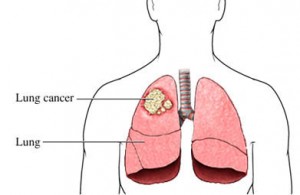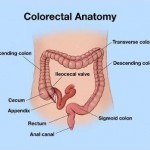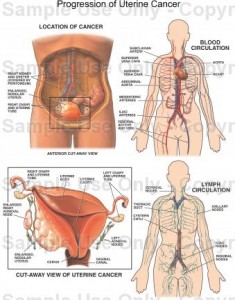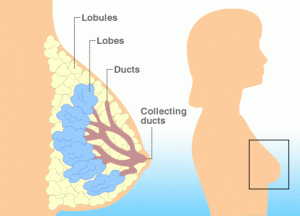 A few weeks ago, a friend of mine dies of prostate cancer at the age of 52. Not long after, I encountered his doctor, who was our mutual friend. With a bite of anger in his voice, he told me: “Let’s face it, this was probably an unnecessary death. John has months of warning symptoms, but he didn’t have a check-up. An examination, performed right after he noticed changes in his urinary habits, might have saved his life.”
A few weeks ago, a friend of mine dies of prostate cancer at the age of 52. Not long after, I encountered his doctor, who was our mutual friend. With a bite of anger in his voice, he told me: “Let’s face it, this was probably an unnecessary death. John has months of warning symptoms, but he didn’t have a check-up. An examination, performed right after he noticed changes in his urinary habits, might have saved his life.”
Prostate cancer struck 56,000 Americans last year. Two out of five of them will be dead in five years – a grim statistic. Yet the in tragic fact is that many of these deaths could be prevented through early diagnosis and treatment. All told, 113,000 Americans died needlessly of various forms of cancer last year, because they didn’t get treatment in time.
Why do so many people ignore the body’s early-warning signs until there is no longer any hope of avoiding the full ravages of the disease? “One reason,” says Dr. Thomas P. Hackett, chief of psychiatry at the Massachusetts General Hospital in Boston, who has studied hundreds of cancer cases during the past eight years, “is the fear of finding out that something is indeed wrong with you – something that may require hospitalization, an operation, even a change in life-style.”
But fear alone isn’t the only thing. Dr. Hackett found that most highly educated people – physicians and other professionals who should know that early treatment usually leads to cures – do not seek medical help any sooner than, say, a grade-school dropout. Why? “Because the person simply refuses to believe that anything unusual could be happening to him,” says Dr. Hackett.
To understand why heeding early-warning signals – especially in the case of cancer – is so important, consider that cancer typically begins when a cell on the surface of tissue or in the lining of a duct undergoes an abnormal change. The rogue cell reproduces itself by dividing into tow cells, which in turn redivide, on and on. Most cancers remain at the site of origin for a long time, however, before starting to invade adjacent tissues. It is during this stage that patient has the best chance for a cure.
Although body signals are never conclusive strikes evidence of cancer, they may be warnings that should send you to your doctor for a check-up.
 Prostate Cancer. This cancer usually strikes men in their middle or later years. Autopsy studies indicate that one man in five past the age of 50 has the beginnings of prostatic cancer, and cancerous changes of the prostate can be found in half of all men at age 70.
Prostate Cancer. This cancer usually strikes men in their middle or later years. Autopsy studies indicate that one man in five past the age of 50 has the beginnings of prostatic cancer, and cancerous changes of the prostate can be found in half of all men at age 70.
Because the prostate surrounds the neck of the bladder where it connects to the urethra, or urine-carrying tube, most symptoms are concerned with a change in urinary habits. Among these changes: the sudden need to get up during the night for urination; difficulty in starting the stream; loss of power burning; post-urination dribbling and sometimes dull pain in the pelvic or anal region. Although symptoms may vary, and all of them may be caused by non0malignant conditions – inflammation, infection cysts or benign tumor – unusual urinary habits always deserve medical examination. Moreover, it’s a good idea for men over 50 to have a prostate exam once a year, for prostatic cancer may spread before it signals.
 Lung cancer. This year, an estimated 98,000 Americans will get lung cancer, and 89,000 will die of the disease. Yet there may be loud-and-clear warning signals of an impending cancer.
Lung cancer. This year, an estimated 98,000 Americans will get lung cancer, and 89,000 will die of the disease. Yet there may be loud-and-clear warning signals of an impending cancer.
To illustrate, Dr. William G. Cahan, of the Memorial Sloan-Kettering Cancer Center in New York, pulls out the file of a 42-year-old housewife, a heavy smoker, who recently underwent surgery for removal of a lung cancer. “Her first early warning came almost three years ago when, instead of waking each morning with her usual dry, hacking ‘smoker’s’ cough, she started raising an unusual amount of phlegm. At first she attributed this to a ‘sinus condition’ with a postnasal drip. She ignored it and continued smoking two-and-a-half packs of cigarettes a day.
“Most probably,” says Dr. Cahan, “this transition form a dry cough signaled a change in the lining of the bronchi of her lung. Some changes are reversible if smoking is stopped; others may progress inexorably to cancer. Too often the symptoms are misinterpreted as a chronic benign condition and allowed to progress to an inoperable state by the time medical care is sought.”
The optimum time to discover lung cancer, of course, is while it is largely without symptoms. Heavy smokers should therefore have periodic chest X rays and microscopic examination of the sputum. In some instances, lung cancer can masquerade as other conditions – repeated bronchitis, frequent bouts of pneumonia, bursitis-like pain in one shoulder, angina pectoris (pain in the chest associated with heart trouble, or a significant enlargement of the area around the fingernails, called clubbing. “If the cause of any of these symptoms can’t be identified,” says Dr. Cahan, “the patient should have a chest X ray. This is particularly important if he or she is a heavy smoker.”
Skin Cancer. The most common site of cancer is the skin. Melanomas, the most deadly form of skin cancer, in some instances can be seen by the naked eye for 5 to 15 years, or even longer, before they start invading underlying tissue. During this signaling period, the condition is usually curable. Nevertheless, last year 3500 people died from melanoma – and 1500 more from other forms of skin cancer.
“Most melanomas start out as a seemingly normal freckle or mole,” says Dr. Martin C. Mihm, a derma-pathologist at the Massachusetts General Hospital and Harvard Medical School. “The patient looks at it in the mirror or bath for so long that, in effect, he stops seeing it. As a result, when the mark begins to change shape or color, it may go unnoticed.”
Does this mean that all freckles and moles must be checked daily? Fortunately not. Melanoma frequently signals its onset in color changes. Go to the doctor at once if any red, white or, particularly, blue specks appear in al long-standing mole. Moles that are uniform bluish-black, bluish-gray or bluish-red, or of uneven surface, also deserve special medical attention. “In short,” says Dr. Mihm, “ simply by watching for uncharacteristic features or changes in coloring on ‘moles’ or ‘freckles,’ you can usually catch skin cancer in time.”
 Colon and Rectal Cancer. This cancer strikes 100,000 Americans a year and kills over half of them. Yet, according to the American Cancer Society, three of four could be saved by early diagnosis and treatment. Here are some signal that should be reported to your doctor at once: any change in bowel habits; any blood or mucus in the stools; any unusual crampy pains in the lower abdomen.
Colon and Rectal Cancer. This cancer strikes 100,000 Americans a year and kills over half of them. Yet, according to the American Cancer Society, three of four could be saved by early diagnosis and treatment. Here are some signal that should be reported to your doctor at once: any change in bowel habits; any blood or mucus in the stools; any unusual crampy pains in the lower abdomen.
 Uterine Cancer. This cancer takes the lives of 11,000 women a year. Yet cancer in the body of the uterus frequently gives an early warning – abnormal bleeding. The best advice: let a doctor determine what the signal means – while there’s a good chance, if it’s cancer, for a cure. Although the cervix, or neck, of the uterus, a frequent site of cancer, may give no very early signals, cancer here can fortunately be detected in time for a complete cure in almost all cases by a “Pap” test, which should be included in every woman’s yearly check-up.
Uterine Cancer. This cancer takes the lives of 11,000 women a year. Yet cancer in the body of the uterus frequently gives an early warning – abnormal bleeding. The best advice: let a doctor determine what the signal means – while there’s a good chance, if it’s cancer, for a cure. Although the cervix, or neck, of the uterus, a frequent site of cancer, may give no very early signals, cancer here can fortunately be detected in time for a complete cure in almost all cases by a “Pap” test, which should be included in every woman’s yearly check-up.
Breast Cancer. This, too, can be headed off by self-awareness as well as regular self-examination. Among the things a woman should watch for are: any lump or thickening in the breast; alteration in the breast’s contour; any discharge from the nipple. These signals can be caused by conditions other than cancer, but a doctor’s definitive exam should be sought immediately.
Cancer isn’t the only catastrophic disease that provides early-warning signals. Cardiologists have known for years that most heart attacks are preceded for weeks and months by a variety of subtle signs. And, if the patient is alert to these, steps can be taken to head off the event. Reviewing the experiences of hundreds of patients, Dr. Irvine H. Page, emeritus consultant cardiologist at the Cleveland Clinic, describes four primary early-warning signs:
- The feeling that you are under constant pressure in your work and social life.
- A buildup of classic cardiac risk factors such as overweight and high blood pressure.
- Unaccustomed chest discomfort such as “acid indigestion,” vague aching, and a feeling of fullness.
- Overwhelming, bone tired fatigue, “This latter sign,” says Dr. Page, “usually comes several hours before an actual attack. At this point you should get to a doctor immediately.”
 “Very often,” says Dr. Hackett, “the person in the best position to spot an early-warning sign is a mate, friend or business associate.” To illustrate his point, he told me, “Two weeks ago, my wife Eleanor called and mentioned an unusual pain under her chest. She rarely talks about minor aches, so I was alerted immediately.” When Mrs. Hackett added that her arms felt heavy, too, he went home at once and took her to the hospital. Examination showed that it was the start of a heart attack.
“Very often,” says Dr. Hackett, “the person in the best position to spot an early-warning sign is a mate, friend or business associate.” To illustrate his point, he told me, “Two weeks ago, my wife Eleanor called and mentioned an unusual pain under her chest. She rarely talks about minor aches, so I was alerted immediately.” When Mrs. Hackett added that her arms felt heavy, too, he went home at once and took her to the hospital. Examination showed that it was the start of a heart attack.
Significantly, when I asked doctors for guidance on the body’s disease signals, certain words kept coming up time and again: unusual, different, change. “We are not suggesting that people become hypochondriacs, running to a physician for every little ache or pain,” says Dr. Howard Ulfelder, Massachusetts General Hospital’s deputy director of cancer services. “But any prolonged or unusual change in body patterns or functions should be checked. Chances are you’ll pick up signs of disease long before it can threaten your life.”